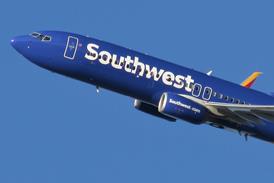Graham Warwick/WASHINGTON DC
NASA will launch "rigorous trade studies" in March to establish the requirements for its revamped second-generation reusable launch vehicle (RLV) programme.
The space agency anticipates pursuing "more than two architecture options" when it begins the five-year $4.5 billion second-generation RLV programme in October - assuming Congress approves NASA's fiscal year 2001 budget request.
From FY2003, NASA plans to focus investment on "at least two competitive options", leading to a decision on full-scale development of a second-generation RLV by the end of 2005 and initial operational capability by 2010.
"When we talk of competition and full-scale development, this does not mean that NASA intends to 'downselect' to a single winner," says Art Stephenson, director of NASA's Marshall Space Flight Center. "Rather, if the market can support more than one RLV, we hope to develop an architecture that can benefit from multiple commercial providers."
This differs from the agency's previous approach which was geared around replacing the Space Shuttle with Lockheed Martin's single-stage-to-orbit VentureStar. Problems with the X-33 technology demonstrator have convinced NASA that "more development along multiple, competing paths is needed", says Stephenson.
NASA plans to seek industry proposals in September for five-year risk-reduction programmes. These are likely to involve ground and flight demonstrations. After two years, efforts will be focused on the most promising areas.
NASA expects the second-generation RLV architecture will consist of "commercially developed and operated launch vehicles combined with government-unique hardware", Stephenson says. The budget requests $1.6 billion over five years for risk-reduction work on NASA-unique systems.
"One area we will be focusing on is the role of a crew return vehicle [CRV] in the overall architecture," he says. Demonstration of the X-38 prototype CRV will continue, but NASA is to decide in FY2003 "whether we should build a vehicle that could fulfil more functions than just crew return", Stephenson says.
The budget request includes $765 million either to proceed with an X-38-based CRV, or pursue a more capable crewed vehicle that would be part of the second-generation RLV architecture.
Under its revised approach, in addition to risk-reduction activities on the second-generation RLV, NASA plans to spend $1.9 billion over the next five years on Space Shuttle upgrades to improve safety and reliability; $315 million to adapt commercial launchers to carry cargo to the International Space Station, to provide "near-term alternative access" in case the Shuttle is grounded; and $1.2 billion on technology development for a third-generation RLV.
Source: Flight International























